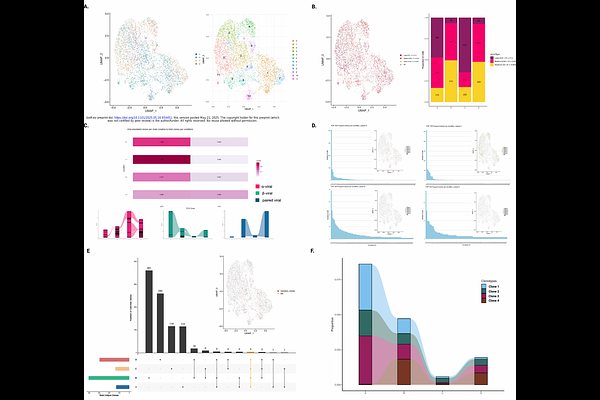CROCKETA: An automated framework for comprehensive multi-omic analysis of gene expression and clonotype immune repertoire at a single-cell level

CROCKETA: An automated framework for comprehensive multi-omic analysis of gene expression and clonotype immune repertoire at a single-cell level
Soria Alcaide, G.; Garcia Aguilera, G.; Portasany Rodriguez, M.; Lalchandani Lakhani, J.; Gonzalez Murillo, A.; Garcia Sanchez, E.; Saiz Ladera, C.; Ramirez Orellana, M.; Garcia Martinez, J.
AbstractCROCKETA (single-Cell Repertoire Organization & Combined Kinetics Exploration for Transcriptomic Analysis) is an automated and adaptable Snakemake pipeline designed to perform fundamental initial stages of single-cell analysis for both transcriptomic and immune repertoire data, with additional steps for detailed assay characterization. CROCKETA stems from the imperative need to devise an optimal methodology for integrating and analyzing single-cell RNA sequencing (scRNA-seq) alongside single-cell T-cell Receptor (scTCR-seq) or B-Cell Receptor (scBCR-seq) data in an automated way by means of state-of-the-art tools. This pipeline encompasses basic steps from primary & secondary scRNA-seq analysis (Quality Control -QC-, sequence alignment, cell-level QC and doublets removal, data preprocessing, cell clustering, cell annotation at both single cell and cluster levels, differential expression analysis, trajectory inference and functional enrichment) along with the incorporation and analysis of immune repertoire data for both B-cells and T-cells, capable of accommodating both human and mouse datasets. The analysis can be conducted from either FastQ-formatted raw data or from expression matrices itself. CROCKETA opens up new horizons of possibilities by providing a reproducible, automated, and efficient solution for processing large volumes of data, addressing a challenge that had yet to be resolved in single-cell analyses.